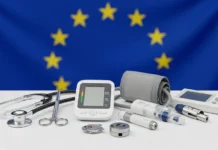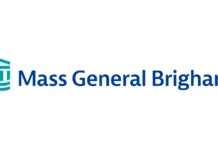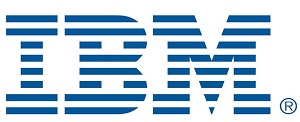As a result of these developments, we are witnessing a move from evidence-based medicine practices, where large scale clinical trials, meta-studies and systematic reviews are used to identify the best practice towards more personalised medicine, implying diagnosis and treatment which are more tailored to individuals. This is not to say that each of us will be offered highly specific treatment plans or drugs designed to match our individual genotype, but it does mean that we can expect our diagnoses and treatments to be based on more granular groups with similar characteristics, or ‘people like me’.The practice of medicine is evolving.
The capture and exchange of digital medical data is creating new opportunities to aggregate information from variety of sources, and apply analytical techniques to generate new insights, such as comparing clinical outcomes, or assessing the cost of effectiveness of different treatments. With increasing online availability of patient information including medical history, lab results, imaging reports, diagnoses, current medications etc, it is now possible to have a more complete understanding of the individual patient. At the same time, the rate of publication of scientific papers on medical research has never been higher, and is increasing the available body of medical knowledge every day.
Personalised medicine is already generating new tools and approaches, such as baseline risk assessments, the use of new biomarkers such as gene expression or proteomics to identify disease long before symptoms appear, and improved therapeutic decision support systems. The success of personalised medicine will depend to a large extent on our ability to process large volumes of data with analytical tools in a form that clinicians will use. There is already evidence available that use of analytics in diagnosis and treatment is producing better outcomes for patients, for example the EuResist project for the treatment of HIV. A future scenario may involve clinical decision support tools based on new ‘information seeking’ or DeepQA technologies such as IBM’s Watson system, to guide doctors or provide second opinion.

However, medicine is generally practised within a healthcare system, and personalised healthcare is more than personalised medicine. To deliver truly personalised healthcare, it requires that we take into account individual preferences, such as which treatment the patient wishes to follow, how they want to access medical services and how they will collaborate with their care team. It requires ‘whole system thinking’, new clinical and patient pathways, and almost certainly revised incentives for some of the players involved, such as paying by results rather than by procedure. It also requires us to accurately identify and authenticate people wherever they turn up in the healthcare system, and to put in places mechanisms to protect privacy and ensure security.
Given the changes and investments that will be needed, can we afford the cost of personalised healthcare? We know that healthcare systems across the world will continue to be challenged by both the demand side of the equation (changing demographics, more demanding patients), and the supply side (inefficiencies and waste in care delivery, patient safety issues). A better question to ask may be, ‘can we afford not to take this opportunity to make healthcare safer, more efficient and more sustainable, by engaging the most under-utilised resource in healthcare – the patients’?
The application of ICT for clinical benefit, or eHealth, has become a major investment area for all involved in medicine and healthcare provision. We have seen primary care doctors, community clinics and hospitals invest in computer systems, and informatics projects to connect these venues of care. We have also seen regions and countries provide eHealth infrastructure such as Summary Care Records, ePrescriptions, Medical Image Archives etc in the interest of better care. However, most of us, if we are fortunate, do not spend much of our life in surgeries, clinics and hospitals. So many of our daily health needs are handled by ourselves, in our homes, at work, and in our communities. This is of course where a lot of innovation and experimentation is taking place, centred on the Internet and services that are being developed there. Healthcare systems need to pay attention to these developments, and find ways to engage with citizens and patients through these channels and services to provide a more convenient and personalised service.

When thinking about these innovations, it is helpful to categorise them into quadrants based on i) whether they are mostly ‘passive’ or ‘collaborative’ services, and ii) whether they are ‘self-directed’ or ‘guided by clinical and care needs. Let’s take a look at each in turn with some illustrative examples.
‘Passive/self directed’ – This quadrant has a focus on informing and educating the individual. We are all aware of the web as a broad source of information on medical matters and health topics. There are news and consumer sites, patient groups and charities and sites provided by healthcare organisations and governments, to inform people about risk factors, lifestyle choices, symptoms and treatments. The Pew Internet Foundation’s 2008 study on ‘The Engaged ePatient Population’ found that 80% of American’s internet users looked online for health information, whilst 75% reported that their last health search affected a decision about how to treat an illness or condition. So people are seeking information and acting on it. This raises important questions about the need to grade the quality of healthcare information available on the web in order to prevent avoidable harm.
‘Passive/guided by clinical and care needs’ – This quadrant is about monitoring and alerting services, where the user is taking advantage of services which may be provided by social care organisations, clinics or 3rd parties. It includes cases such as social alarms and alerts and remote patient monitoring. The aim of these services is to promote the possibility of independent living for the vulnerable, and improving continuity of care for those with long-term and largely self-managed conditions, such as diabetes, congestive heart failure, COPD and dementia, to name a few. The services may involve sensors and panic buttons installed in the individual’s home, easy-to-use connected medical devices such as scales, blood pressure cuffs and glucometers, and an interface that captures patient’s self-reported data, such as mood, sleep patterns, degree of pain and medication side effects. This is a fruitful area for research and investment and could provide important early warnings of deterioration or falls, avoiding the need for emergency hospital admissions. Pandemic surveillance services also fit within this quadrant, with the possibility of combining information from social media and online news sources with text analytics to pick up early warnings about the outbreaks and spread of infectious disease.
‘Collaborative/self directed’ – this is the world for connecting or relating to other people with similar problems or situations using social media, and is sometimes referred to as Health 2.0. It can include ‘peer to peer’ healthcare services, such as those provided by sites such as PatientsLikeMe, or blogs like ePatients, where people with a health issue or a recent diagnosis can go online to find, connect and share information with others. These sites rely on user-generated content and it is interesting to see how willing people are when faced with an incurable condition or unexpected diagnosis, to share their most personal health stories and daily measurements with strangers, in order to provide and seek help. Indeed, PatientsLikeMe is now considered by some to be one of the best sources of information on the realities of living with conditions like multiple sclerosis and motor neurone disease. Another type of site is the ‘patient reported experience’ or PREM, where individuals submit their praises, complaints or opinions about their experience of care, with good examples being HealthGrades (USA) and IWantGreatCare (UK). The feedback provided on these sites could be used by providers to better understand and improve care processes.
‘Collaborative/guided by clinical and care needs’ – This final quadrant is centred on deciding and managing and should be considered a key area to explore in the co-creation of health. In this domain, doctors and carers can use online services to collaborate with patients, avoiding unnecessary face-to-face appointments and can improve continuity of care. The tools used to provide these capabilities are similar to those used in social media sites, including email, instant messaging and video, but are integrated with medical record systems and practice management systems to provide a complete platform. A good example is the Myca platform used by the Hello Health primary care network in the USA. Other types of service in this quadrant include ‘shared care’ concepts, usually based around a secure portal shared by the patient and their care team, where targets can be set, results are stored, and risk calculators are provided to assist self-management, for example Dialog system used in Denmark to provide support for diabetic patients. Another example is the Patient Empowerment System developed by IBM for the Gachon University Gill Hospital in South Korea, where personalised clinical guidelines and knowledge, real-time monitoring services, and an efficient collaboration service provide the patient online tools to understand and manage their condition with more success.
There is no doubt that we are at a pivotal moment in the development of healthcare systems. Medical practice is evolving, promising a future of more personalised medicine. At the same time, our healthcare systems are under increasing pressure to become more efficient and accessible, whilst maintaining the highest standards of quality. It seems that many citizens and patients have the skill and motivation to play a bigger role in the co-creation of better health, using online services and tools to personalize a way they find, access and keep in contact with their carers, their family and other social networks. Now is the time to design and build systems that can deliver personalized healthcare, using the tools that are already in our hands, for the benefit of all.




















